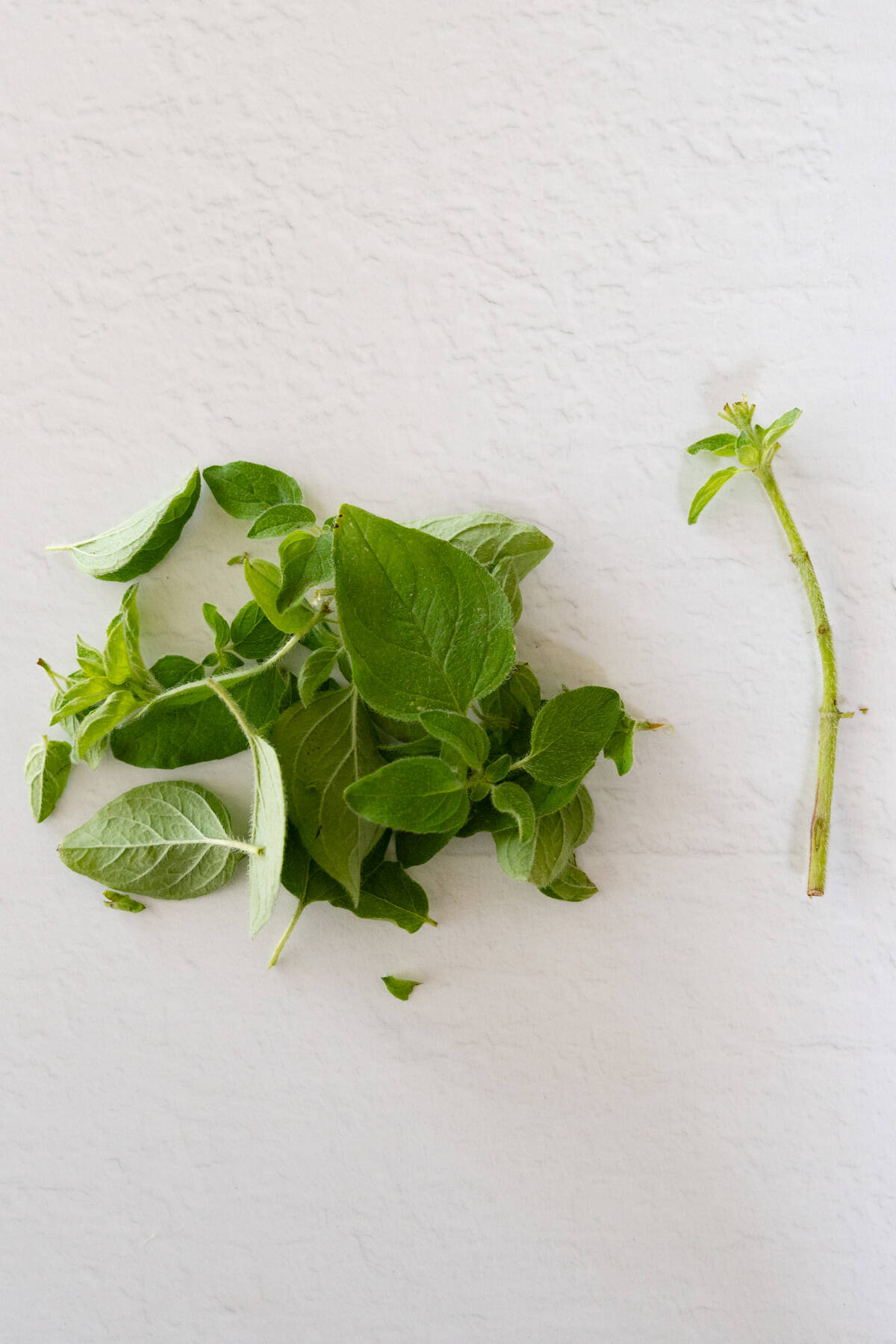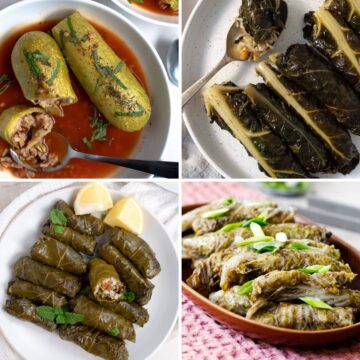I grew up eating fresh oregano which is profoundly robust in flavor. It can be used raw, dried or cooked. This article discusses fresh oregano and features recipes that use fresh oregano. It’s a herb that can easily be grown in most herb gardens and is a must-have herb for all cooking enthusiasts.

What Is Fresh Oregano?
Fresh oregano, scientifically known as Origanum vulgare, is a fragrant herb that member of the mint family.
It is native to the Mediterranean and Western Asia region and has been a staple in Mediterranean cuisine for centuries.
Known for its robust flavor and aromatic qualities, fresh oregano has found its way into kitchens around the world.

What Does Fresh Oregano Look Like?
Fresh oregano leaves are bright green and are slightly fuzzy.
They are arranged opposite each other along the stem and can vary in size, but they are generally about ½ to 1 inch (1.3 to 2.5 cm) in length.
When you touch or crush the leaves, they release a strong, earthy, and herbaceous fragrance, which is part of its culinary appeal.
In some varieties of oregano, you may also find tiny white, pink, or purple flowers that appear in clusters at the tops of the stems.
I like to use these edible flowers to garnish salads at times.

What Does Fresh Oregano Taste Like?
Fresh oregano has a bold and earthy flavor with notes of mint, citrus, and pine.
Its taste is both pungent and slightly bitter yet sweet, making it a versatile herb capable of pairing with a variety of savory dishes.
Its aroma is equally enticing.
Health Benefits of Fresh Oregano
Fresh oregano boasts a range of health benefits. It is rich in antioxidants, vitamins, and minerals, making it a valuable addition to your diet.
Some of its potential health benefits include improved digestion, immune system support, and anti-inflammatory properties.

Basic Tips for Using Fresh Oregano in Your Dishes
Before I jump into my collection of fresh oregano recipes, here are some basic tips to get the best flavor from this herb in fresh form.
- Use the freshest-looking green leaves, they shouldn't look too wilted.
- Wash and dry fresh oregano quickly as wet leaves turn brown quite fast. It is easiest to wash this herb whilst the leaves are still on the stem using a lettuce spinner or dabbing them with a paper towel or clean tea towel.
- The oregano stems are woody and not pleasant to eat, so it is best to take the leaves off the stems. This can easily be done by gently pinching the stronger end of the stem and then pulling your fingers to the other end of the stem, removing the leaves in one swift move.
- The stems carry a strong flavor too, steep them in hot water to make an oregano tea or tie them up and use them in soups, stews, and stocks.

Fresh Oregano Recipes

Fresh Oregano Salad

Fresh Oregano Bread Scrolls

Zaatar Using Oregano

Fresh Oregano Tea
Other Ways To Use Fresh Oregano
Consider using this herb in other types of salads, such as a Greek salad, in tomato sauces, in fresh Italian seasoning, as a substitute for traditional basil pesto (think lemon oregano pesto), in a chimichurri sauce, other salad dressings or use a little bit in garlic bread rather than fresh parsley.

Fresh Oregano Substitutes
If you're out of fresh oregano, there are several substitutes you can use in your recipes. Here are some common options:
- Marjoram is a close relative of oregano and has a similar flavor profile, albeit milder. You can use fresh or dried marjoram as a 1:1 substitute for fresh oregano.
- Thyme has a subtle earthy flavor and can be used in place of oregano in certain recipes, particularly those with a savory or herby profile. Use fresh thyme as a 1:1 substitute. Have you tried a lemon and thyme cake?
- Rosemary has a stronger, pine-like flavor compared to oregano, so use it sparingly as a substitute. A small amount of fresh or dried rosemary can complement dishes that typically contain oregano.
- Tarragon features a unique, anise-like flavor. While it's quite different from oregano, it can work as a substitute in some recipes where you want a fresh herb with a distinct taste. Use it in moderation, as it can easily overpower other flavors.
- Basil is another herb with a slightly sweet and peppery flavor. While it's not a perfect match for oregano, it can work well in Italian and Mediterranean dishes. Use fresh basil as a replacement, using about 1.5 times the amount of fresh basil as fresh oregano is called for in the recipe.
Conclusion
Whilst fresh oregano can seem daunting to incorporate into your cooking due to its robust flavor and scent, it can open up a world of culinary possibilities adding the most delicious, bold, and aromatic flavors, transforming ordinary dishes into extraordinary ones.
If you’ve not yet cooked or eaten fresh oregano, I highly recommend you start using this fresh herb to give magic to your meals, try one of the recipes above as a starting point, you may find oregano to become one of your favorite herbs.
FAQ's
No, fresh oregano has a more vibrant flavor and aroma compared to dried oregano. You can use them interchangeably in some recipes like soups, stews, baking, and sauces, but adjust the quantity accordingly.
You can sometimes find fresh oregano in farmers' markets, or consider growing it at home for a readily available supply, which you can buy seeds or seedlings from your local plant nursery.





Comments
No Comments